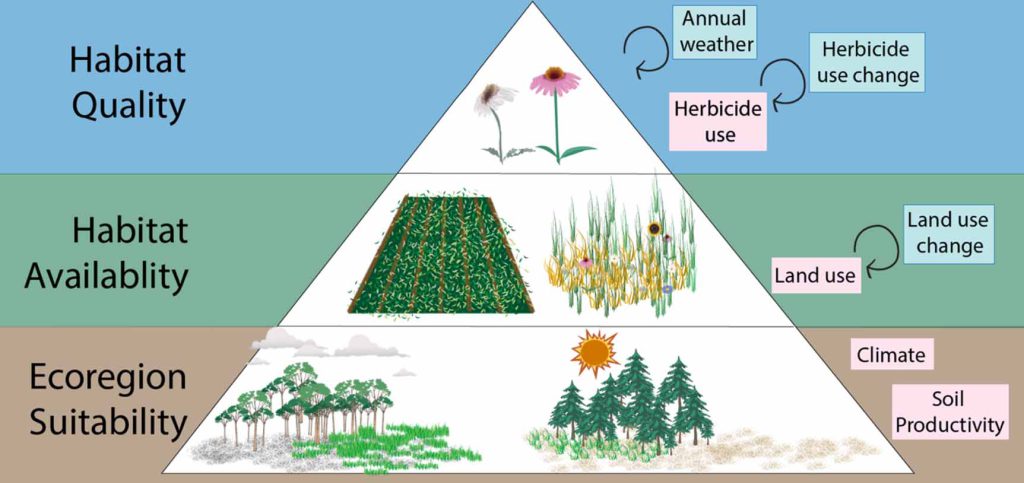Examining spatial and temporal drivers of pollinator nutritional resources: evidence from five decades of honey bee colony productivity data
We are here to share current happenings in the bee industry. Bee Culture gathers and shares articles published by outside sources. For more information about this specific article, please visit the original publish source: https://iopscience.iop.org/article/10.1088/1748-9326/acff0c
Gabriela M Quinlan3,1, David A W Miller2 and Christina M Grozinger1
Published 17 October 2023 • © 2023 The Author(s). Published by IOP Publishing Ltd
, , Citation Gabriela M Quinlan et al 2023 Environ. Res. Lett. 18 114018
DOI 10.1088/1748-9326/acff0c

Figure 1. Conceptual diagram illustrating the environmental filtering process influencing pollinator floral resource availability. As one moves up the pyramid, environmental factors act at finer spatial and temporal scales and further filter floral resource availability. Spatial factors are shown to the left in pink boxes and temporal factors are shown in blue boxes. At the foundation of the pyramid is ecoregion suitability (characterized by climate and soil productivity), followed by habitat availability (characterized by land use and annual land use change), and habitat quality (characterized by herbicide use, herbicide use change, and annual weather). Adapted from [2].
Abstract
Pollinators are an essential component of terrestrial food webs and agricultural systems but are threatened by insufficient access to floral resources. Managed honey bees, as generalist foragers that hoard nectar as honey, can act as bioindicators of floral resources available to pollinators in a given landscape through their accumulation of honey. Honey yields across the United States have decreased appreciably since the 1990s, concurrent with shifts in climate, land-use, and large-scale pesticide application. While many factors can affect honey accumulation, this suggests that anthropogenic stressors may be having large-scale impacts on the floral resources that pollinators depend on for their nutrition. We used hierarchical partitioning on five decades of state-level data to parse the most important environmental factors and likely mechanisms associated with spatial and temporal variation in honey yields across the US. Climatic conditions and soil productivity were among the most important variables for estimating honey yields, with states in warm or cool regions with productive soils having the highest honey yields per colony. These findings suggest that foundational factors constrain pollinator habitat suitability and define ecoregions of low or high honey production. The most important temporally varying factors were change in herbicide use, land use (i.e. increase in intensive agriculture and reduction in land conservation programs that support pollinators) and annual weather anomalies. This study provides insights into the interplay between broad abiotic conditions and fine temporal variation on habitat suitability for honey bees and other pollinators. Our results also provide a baseline for investigating how these factors influence floral resource availability, which is essential to developing strategies for resilient plant–pollinator communities in the face of global change.








